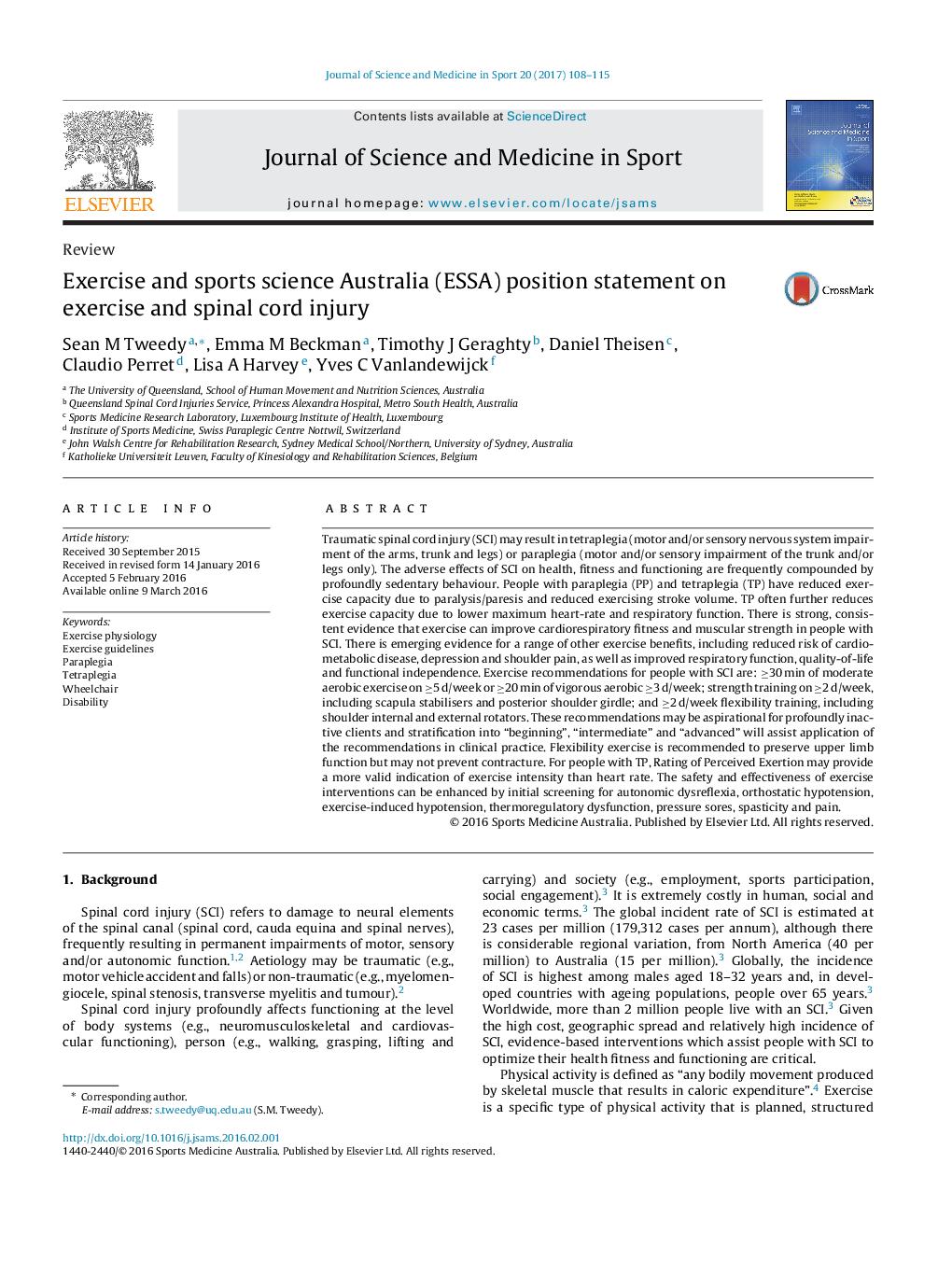| کد مقاله | کد نشریه | سال انتشار | مقاله انگلیسی | نسخه تمام متن |
|---|---|---|---|---|
| 5574070 | 1403927 | 2017 | 8 صفحه PDF | دانلود رایگان |

Traumatic spinal cord injury (SCI) may result in tetraplegia (motor and/or sensory nervous system impairment of the arms, trunk and legs) or paraplegia (motor and/or sensory impairment of the trunk and/or legs only). The adverse effects of SCI on health, fitness and functioning are frequently compounded by profoundly sedentary behaviour. People with paraplegia (PP) and tetraplegia (TP) have reduced exercise capacity due to paralysis/paresis and reduced exercising stroke volume. TP often further reduces exercise capacity due to lower maximum heart-rate and respiratory function. There is strong, consistent evidence that exercise can improve cardiorespiratory fitness and muscular strength in people with SCI. There is emerging evidence for a range of other exercise benefits, including reduced risk of cardio-metabolic disease, depression and shoulder pain, as well as improved respiratory function, quality-of-life and functional independence. Exercise recommendations for people with SCI are: â¥30 min of moderate aerobic exercise on â¥5 d/week or â¥20 min of vigorous aerobic â¥3 d/week; strength training on â¥2 d/week, including scapula stabilisers and posterior shoulder girdle; and â¥2 d/week flexibility training, including shoulder internal and external rotators. These recommendations may be aspirational for profoundly inactive clients and stratification into “beginning”, “intermediate” and “advanced” will assist application of the recommendations in clinical practice. Flexibility exercise is recommended to preserve upper limb function but may not prevent contracture. For people with TP, Rating of Perceived Exertion may provide a more valid indication of exercise intensity than heart rate. The safety and effectiveness of exercise interventions can be enhanced by initial screening for autonomic dysreflexia, orthostatic hypotension, exercise-induced hypotension, thermoregulatory dysfunction, pressure sores, spasticity and pain.
Journal: Journal of Science and Medicine in Sport - Volume 20, Issue 2, February 2017, Pages 108-115